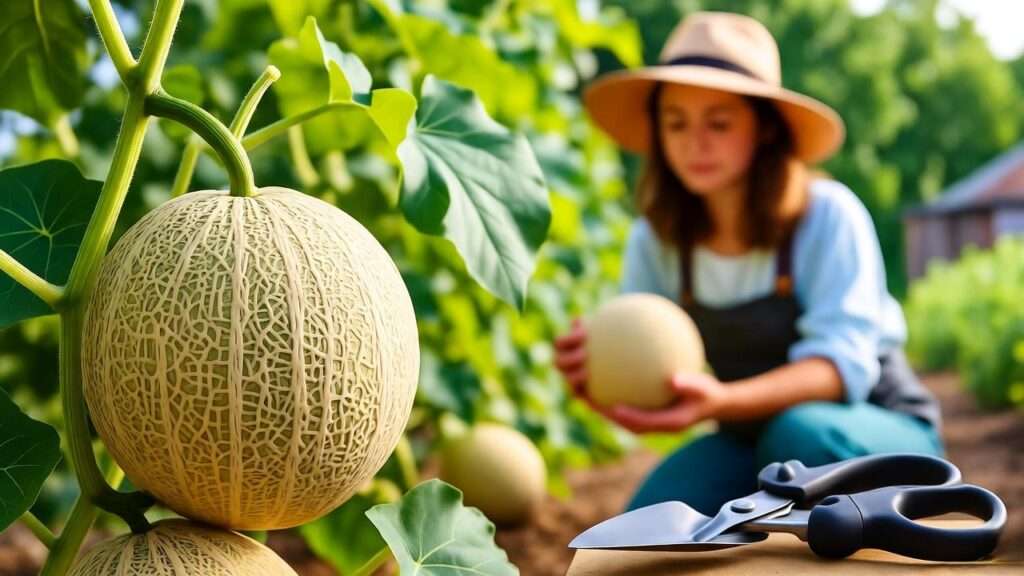Picture this: It’s a warm summer afternoon, and you’re slicing into a perfectly ripe, homegrown cantaloupe. The sweet, juicy flesh bursts with flavor, a reward for your gardening efforts. If you’ve ever wondered how to plant cantaloupe to achieve this moment, you’re in the right place! Growing cantaloupes at home is not only achievable but also incredibly rewarding, even for beginners. With over a decade of horticultural experience and insights from master gardeners, this comprehensive guide will walk you through every step to grow vibrant, delicious cantaloupes. Say goodbye to common pitfalls like low yields or pest problems—this article is your ultimate resource for a bountiful harvest. Let’s dive in! 🌻
Why Grow Cantaloupes? The Benefits of Homegrown Melons 🍈
Nutritional and Culinary Value 🥗
Cantaloupes are a nutritional powerhouse, packed with vitamins A and C, antioxidants, and fiber. A single cup provides over 100% of your daily vitamin A needs, supporting eye health and immunity. Their sweet, refreshing flavor makes them a versatile ingredient for salads, smoothies, or even grilled desserts. Imagine tossing homegrown cantaloupe chunks into a summer salad or blending them into a chilled soup—your taste buds will thank you! 😋
Cost Savings and Sustainability 💰🌍
Store-bought cantaloupes can be pricey, especially organic ones. Growing your own saves money and reduces your carbon footprint by cutting down on food miles. Plus, home gardening lets you control what goes into your soil—no synthetic pesticides or fertilizers here! By composting kitchen scraps, you can create a closed-loop system that’s both eco-friendly and budget-friendly. 🌎
Gardening Joy and Family Fun 🌻
There’s something magical about nurturing a tiny seed into a sprawling vine heavy with fruit. Growing cantaloupes can be a fun family project, teaching kids about nature while creating lasting memories. One gardener shared, “Watching my kids pick their first cantaloupe was pure joy—they couldn’t believe they grew something so sweet!” Whether you’re a seasoned gardener or a newbie, the process is a delightful journey. 🌼
Understanding Cantaloupes: Key Facts for Success 📚
What Are Cantaloupes? 🌱
Cantaloupes, scientifically Cucumis melo var. cantalupensis, are warm-season melons known for their netted rind and orange flesh. Often confused with muskmelons, true cantaloupes have a rough, warty surface, though the term is commonly used for the netted varieties in North America. Originating in Persia, they thrive in warm climates and are a summer garden favorite.
Ideal Growing Conditions ☀️
Cantaloupes love heat, requiring 80–100 days of warm weather to mature. Here’s a quick guide to their needs:
| Factor | Requirement |
|---|---|
| Temperature | 70–85°F (21–29°C) |
| Soil pH | 6.0–6.8 (slightly acidic) |
| Sunlight | Full sun (6–8 hours daily) |
| Soil Type | Well-drained, loamy, rich in organic matter |
With these conditions met, your cantaloupes are set for success! 🌞
Step-by-Step Guide to Planting Cantaloupe 🌿
Step 1: Choosing the Right Cantaloupe Variety 🧑🌾
Selecting the right variety is key to a thriving crop. Here are some popular options:
- Hale’s Best: A classic heirloom with sweet, juicy flesh; matures in 80–85 days.
- Athena: A hybrid with excellent disease resistance; ideal for humid climates.
- Ambrosia: Known for its rich flavor and firm texture; great for small gardens.
Choose based on your climate and space. For cooler regions, opt for early-maturing varieties like ‘Minnesota Midget.’ Expert Tip: Beginners should try disease-resistant hybrids to minimize risks. 🌱
Step 2: Preparing the Soil 🏞️
Cantaloupes thrive in fertile, well-drained soil. Start by testing your soil’s pH with a home kit (available at garden centers). Aim for a pH of 6.0–6.8, amending with lime to raise pH or sulfur to lower it. Mix in 2–3 inches of compost or aged manure to boost nutrients. Pro Insight: Create a melon-friendly compost blend with 50% garden compost, 30% leaf mold, and 20% well-rotted manure for optimal fertility. Work this into the top 12 inches of soil for strong root development. 🪴
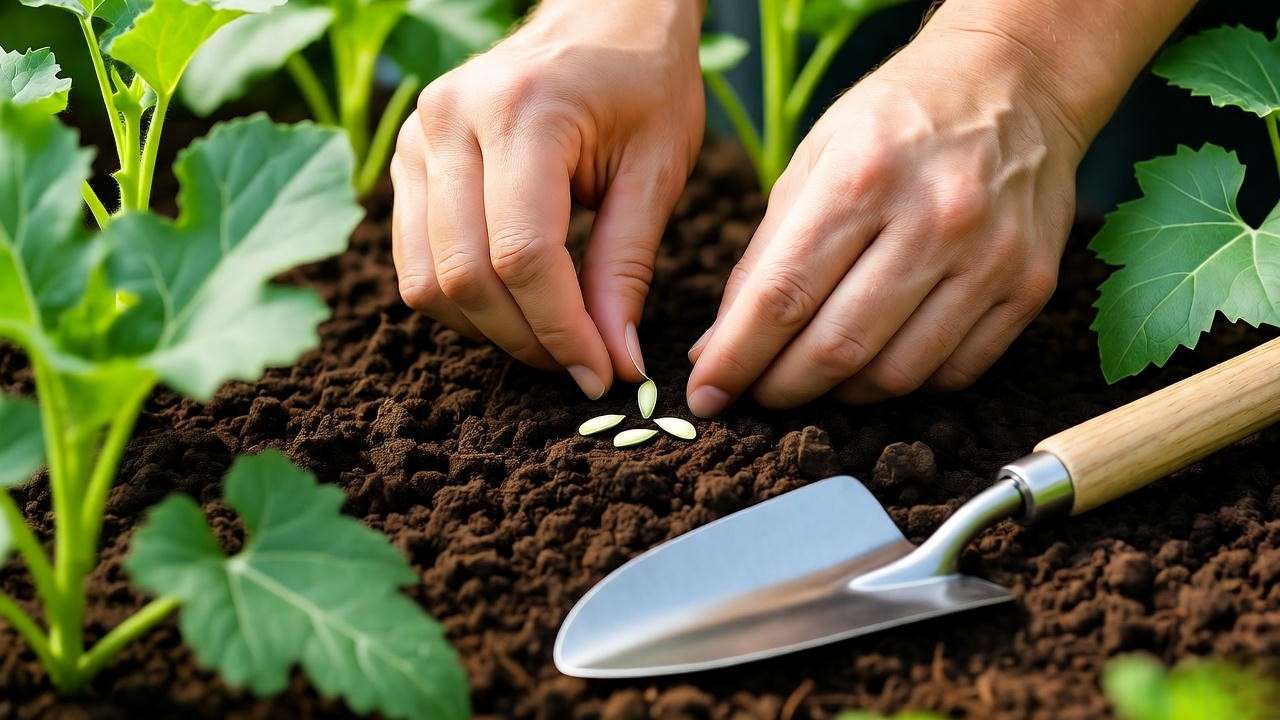
Step 3: Starting Seeds or Transplants 🌱
You can start cantaloupe seeds indoors or sow them directly in the garden. For colder climates, start seeds indoors 3–4 weeks before the last frost date (check your USDA hardiness zone). Use biodegradable pots to avoid root disturbance. Here’s what you’ll need:
- Seed-starting trays or pots
- Seed-starting mix
- A heat mat (to maintain 75–85°F)
- Grow lights (optional for cloudy regions)
Sow seeds ½ inch deep, keeping soil moist but not soggy. Transplant seedlings when they have 2–3 true leaves and nighttime temperatures exceed 55°F. For direct sowing, wait until soil temperatures reach 70°F. 📅
Step 4: Planting Cantaloupe in Your Garden 🚜
Plant cantaloupes in “hills” (mounds) or rows, spacing plants 2–3 feet apart to allow vines to spread. Each hill should contain 2–3 seeds or one transplant, planted 1 inch deep. If space is limited, consider vertical gardening with a sturdy trellis—support fruits with slings to prevent vine damage. Visual Aid: A diagram showing 36-inch spacing between hills ensures proper air circulation and reduces disease risk. 🌾
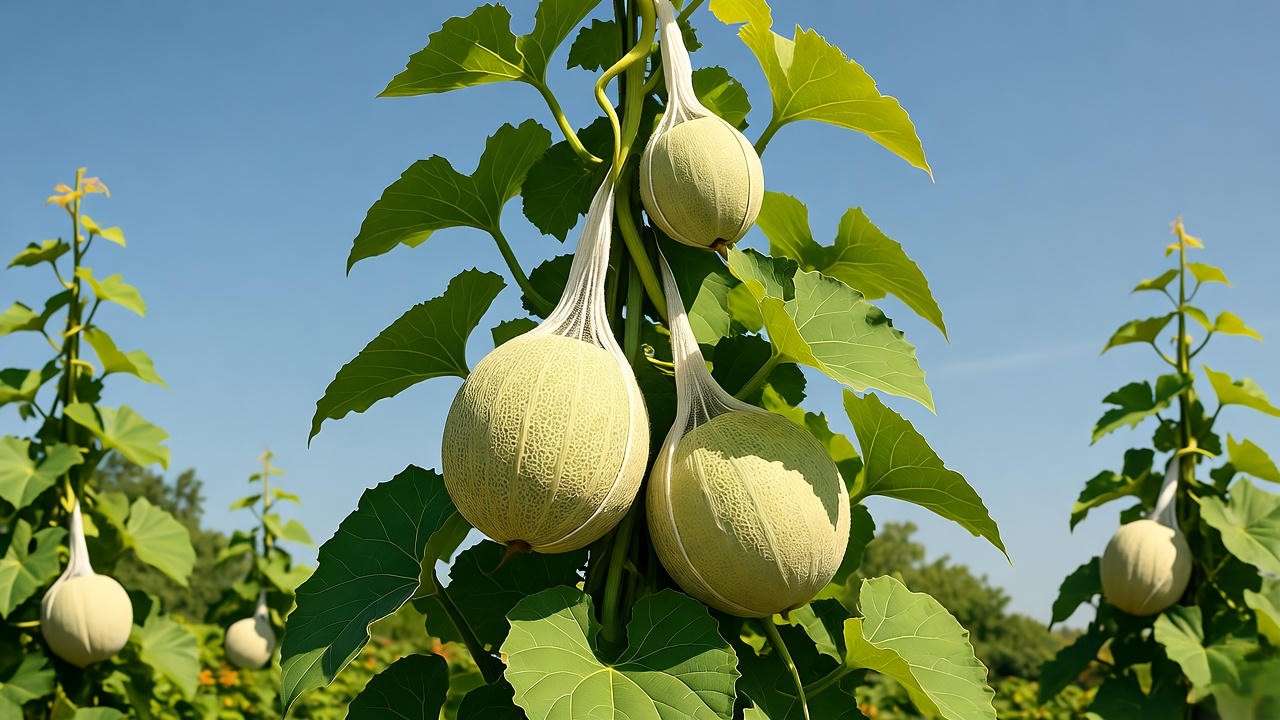
Step 5: Watering and Mulching 💧
Cantaloupes need consistent moisture, especially during fruit development. Water deeply (1–2 inches per week), preferably in the morning, to keep roots hydrated without wetting foliage. Use drip irrigation or a soaker hose for efficiency. Apply a 2-inch layer of organic mulch (straw or wood chips) to retain moisture, suppress weeds, and regulate soil temperature. Common Mistake: Overwatering can dilute flavor and cause fruit to crack—aim for evenly moist, not waterlogged, soil. 💦
Caring for Cantaloupe Plants: Maintenance Tips 🌼
Watering and Fertilizing 💦
Fertilize cantaloupes strategically to support growth and fruiting. Apply a nitrogen-rich fertilizer (e.g., 10-10-10) at planting and again when vines start to run. Switch to a phosphorus-heavy fertilizer (e.g., 5-10-10) once flowers appear to boost fruit development. Organic options like fish emulsion or compost tea work wonderfully. Water consistently, ensuring the soil stays moist 6–8 inches deep. 🪣
Pruning and Training Vines ✂️
Prune excess vines to improve air circulation and focus energy on fruit production. Remove lateral shoots after the first few fruits set, leaving 2–3 fruits per vine for larger, sweeter melons. If trellising, gently train vines upward, securing them with soft ties. Use slings (made from old t-shirts or pantyhose) to support heavy fruits. This prevents vine stress and ensures even ripening. 🌿
Pest and Disease Management 🐞
Cantaloupes face threats from pests like aphids, cucumber beetles, and spider mites. Use row covers early in the season to protect young plants, removing them during flowering to allow pollination. For organic control, mix a neem oil spray (1 tsp neem oil, 1 tsp mild soap, 1 quart water) and apply weekly. Common diseases include:
- Powdery Mildew: White spots on leaves; prevent with good spacing and morning watering.
- Fusarium Wilt: Yellowing, wilting vines; choose resistant varieties and rotate crops.
Expert Advice: Rotate planting sites yearly to prevent soil-borne diseases. 🧑🌾
Pollination: Ensuring a Bountiful Harvest 🐝
Cantaloupes rely on pollinators like bees to set fruit. Poor pollination leads to small or misshapen melons. Encourage bees by planting pollinator-friendly flowers (e.g., marigolds, zinnias) nearby. If pollinators are scarce, hand-pollinate by:
- Identifying male (thin stem, no fruit base) and female (small fruit base) flowers.
- Using a small brush to transfer pollen from male to female flowers.
- Repeating daily during peak flowering.
Fun Fact: A single bee can visit up to 5,000 flowers in a day, ensuring robust pollination! 🐝
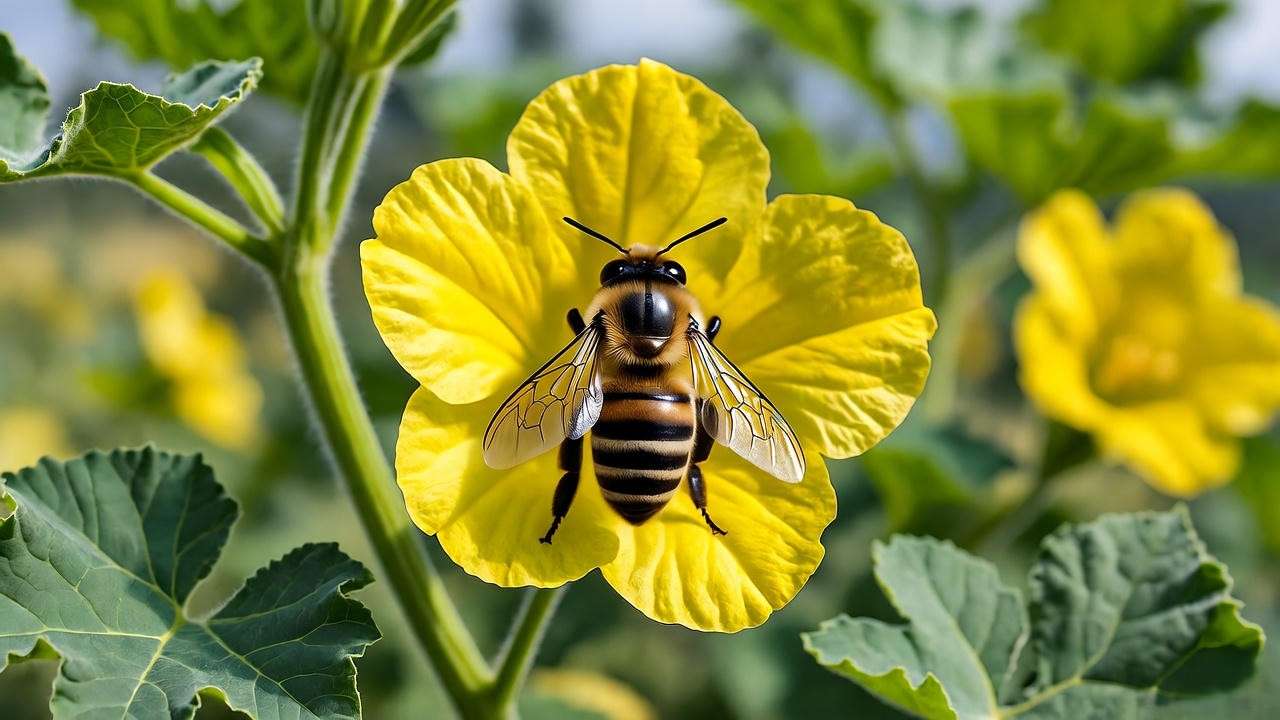
Harvesting and Storing Your Cantaloupes 🍈
When and How to Harvest ⏰
Knowing when to harvest is crucial for sweet, juicy cantaloupes. Look for these signs of ripeness:
- Aroma: A ripe cantaloupe emits a sweet, musky fragrance at the stem end.
- Slip Test: The fruit detaches easily from the vine with gentle pressure (the “slip” stage).
- Rind Color: The netting turns beige, and the underlying rind shifts from green to tan.
Harvest by gently twisting the melon off the vine or cutting it with clean shears, leaving a short stem. Handle carefully to avoid bruising. For best flavor, pick in the morning when sugars are concentrated. Pro Tip: If the melon doesn’t slip easily, give it a few more days to ripen. 🍉
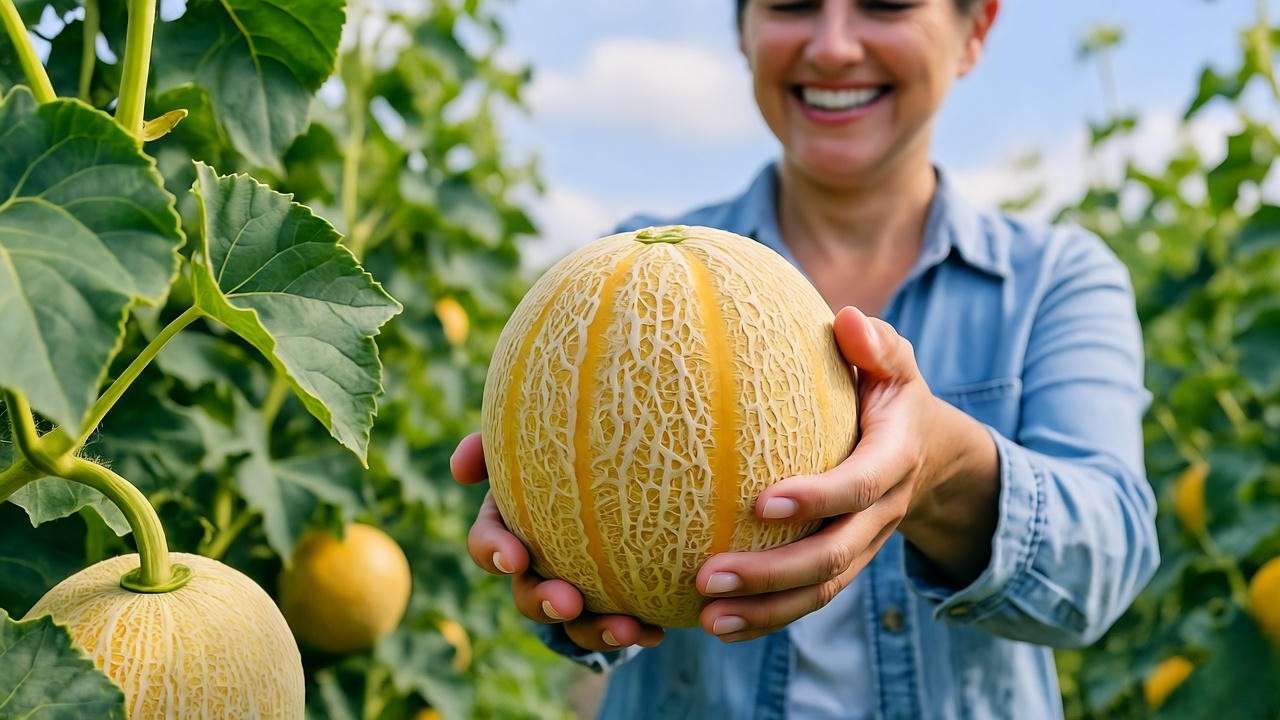
Storing and Preserving 🧊
Fresh cantaloupes last about 2–3 weeks in the refrigerator at 35–40°F. Store whole melons in a cool, dry place or wrap cut pieces tightly in plastic to maintain freshness. For longer preservation:
- Freezing: Cube the flesh, freeze on a tray, then transfer to airtight bags for up to 6 months.
- Canning: Make cantaloupe jam or preserves with a tested recipe for safety.
- Recipe Idea: Blend frozen cantaloupe with a splash of lemon juice and sugar for a refreshing sorbet. Blend 4 cups of cubes with ¼ cup sugar and 1 tbsp lemon juice, then freeze in an ice cream maker.
Seed Saving: To grow cantaloupes next season, scoop seeds from a ripe, healthy melon, rinse, and air-dry for 1–2 weeks. Store in a cool, dry place in a labeled envelope. 🌱
Troubleshooting Common Cantaloupe Growing Problems 🛠️
Even experienced gardeners face challenges. Here’s a troubleshooting guide for common issues:
| Problem | Cause | Solution |
|---|---|---|
| Yellowing Leaves | Overwatering or nutrient deficiency | Check soil moisture; apply balanced fertilizer (e.g., 10-10-10). |
| Small Fruits | Poor pollination or overcrowding | Hand-pollinate; thin to 2–3 fruits per vine. |
| Bitter Melons | Stress (e.g., irregular watering) | Maintain consistent moisture; mulch to stabilize soil conditions. |
| Pest Damage | Aphids, cucumber beetles | Use neem oil spray; introduce beneficial insects like ladybugs. |
| Cracked Fruits | Sudden overwatering | Water evenly; avoid heavy irrigation after dry spells. |
Case Study: Last summer, a gardener in Texas struggled with small, tasteless cantaloupes. By hand-pollinating and switching to drip irrigation, they harvested 10 large, sweet melons the next season. Consistent care makes all the difference! 🌟
Expert Tips for Maximizing Your Cantaloupe Yield 🌟
Take your cantaloupe game to the next level with these advanced techniques:
- Companion Planting: Grow marigolds or nasturtiums nearby to repel pests naturally. Their vibrant flowers also attract pollinators, boosting fruit set.
- Extend the Season: Use row covers or cold frames in early spring to warm the soil and protect young plants from late frosts. Remove covers during flowering.
- Calcium Boost: Crush clean eggshells and mix them into the soil around plants to prevent blossom-end rot and support fruit development.
- Gardener’s Secret: Place a wooden board or tile under developing melons to keep them off damp soil, reducing rot and pest issues.
These tips, honed from years of trial and error, ensure bigger, tastier harvests. 🧑🌾
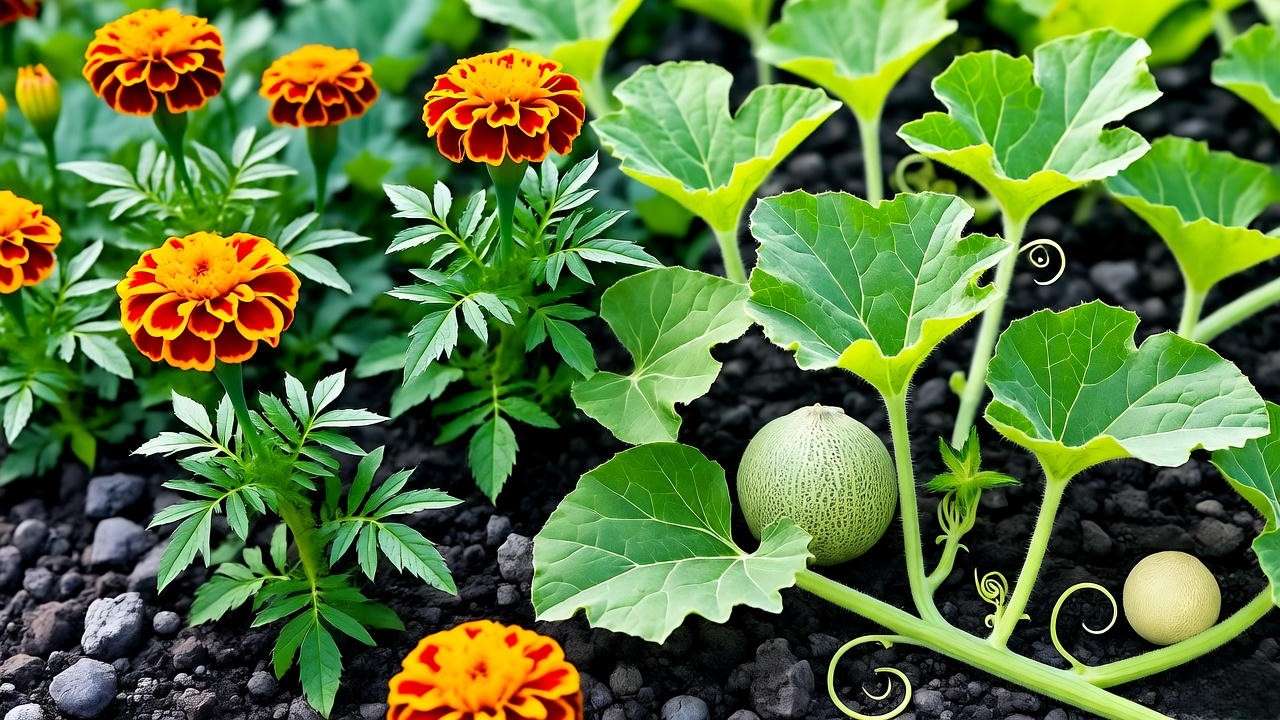
FAQs About Growing Cantaloupe ❓
How long does it take to grow cantaloupe?
Cantaloupes take 80–100 days from planting to harvest, depending on the variety and climate. Early-maturing varieties like ‘Minnesota Midget’ may ripen in 70 days.
Can I grow cantaloupe in containers?
Yes! Choose compact varieties like ‘Sugar Cube’ and use a 5-gallon container with well-drained soil. Provide a trellis for support and ensure 6–8 hours of sun daily.
Why are my cantaloupe vines not producing fruit?
Poor fruit set often results from inadequate pollination or nutrient imbalance. Hand-pollinate and apply a phosphorus-rich fertilizer during flowering.
How many cantaloupes will one plant produce?
A healthy plant yields 2–4 melons, depending on variety and care. Thinning to 2–3 fruits per vine promotes larger, sweeter melons.
What pests are most common for cantaloupes?
Aphids, cucumber beetles, and spider mites are frequent culprits. Use row covers early and neem oil for organic control.
Can cantaloupes grow in partial shade?
Cantaloupes need full sun (6–8 hours daily) for optimal growth. Partial shade may reduce yields and flavor.
How do I know if my cantaloupe is ripe?
Check for a sweet aroma, beige netting, and easy detachment from the vine. A tan rind under the netting confirms ripeness.
Conclusion: Enjoy Your Homegrown Cantaloupes! 🎉
Growing cantaloupes is a delightful journey from seed to harvest, yielding sweet rewards for your efforts. By choosing the right variety, preparing fertile soil, and providing consistent care, you’ll enjoy a bountiful crop of juicy melons. Follow this guide’s steps—selecting varieties, planting correctly, managing pests, and harvesting at peak ripeness—to ensure success. Whether you’re a beginner or a seasoned gardener, you’re now equipped to grow cantaloupes with confidence. Start your melon patch today and share your progress with #GrowYourMelon on social media! 🌻
Explore related articles on our site, like “How to Grow Watermelons” or “Organic Pest Control for Your Garden,” for more gardening inspiration. Happy planting! 🍈

